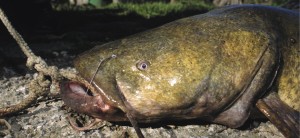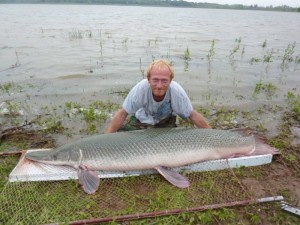Join National Wildlife Federation’s 11th annual Great American Campout
Tens of thousands of people across the nation will be camping for a cause on Saturday with the kickoff of the 11th Annual National Wildlife Federation Great American Campout. In conjunction with Great Outdoors Month, the annual event runs through September 7, 2015 encouraging people of all ages to camp in their parks, campgrounds, backyards and neighborhoods as a way to reconnect with nature.
“Spending time in America’s great outdoors is not only a chance to renew our own spirit, it’s a chance to inspire our next generation of outdoor enthusiasts and public land stewards,” said Collin O’Mara, president and CEO of National Wildlife Federation, who’ll be taking part in his home state’s Delaware Capital Campout. “That’s why I spend as much time as I can camping, hiking and fishing with my daughter – to share the rejuvenating conservation values and love for the natural world that my parents instilled in me. This helps us live the adage that we only conserve what we love, love what we understand, and understand what we are taught.”
To participate, National Wildlife Federation asks people of all ages to pledge to camp or get outdoors anywhere – a forest, a local park, or their own backyards – at least once this summer. The event website at NWF.org/Campout provides all the information needed, including a directory of public Great American Campout locations, tips on what to bring, lists of campout activities and recipes, and more. Campers are encouraged to take #Campies (Camping Selfies) and submit them to NWF’s Facebook, Twitter and Instagram pages to share their experiences.
Nick Offerman, star of NBC’s Parks & Recreation, serves as Official Celebrity Spokesman in promotional online and print ads for the cause. “Of course it’s great. It’s camping. And it’s American,” said Offerman.
Activities and highlights of Great American Campout 2015 include:
- Virginia: All 36 of the Virginia State Parks will be hosting a Great American Campout. There will be parks with special overnight campout events, parks that offer campsites visitors can reserve with related programming on Saturday and Sunday, and a few of our day use parks with programs only. Please find more information here.
- California: 5th Annual Discovery Bay Community Campout will be held on June 27 at Cornell Park. Discovery Day has the largest Campout in the nation with more than 2,000 attendees last year. For complete details and registration, please go to this link.
- NWF Staff: The National Wildlife Federation’s National Advocacy Center in DC is hosting camping, hiking, and good times with NWF staff and friends in Shenandoah National Park on Friday, June 26 through Sunday, June 28 for Great American Campout.
- Great Outdoors Month and Capital Campouts: Governors are taking an active role in Great Outdoors Month 2015 by hosting young campers at an appropriate location in each state capital. These campouts can be at the governor’s residence, at the state capitol or at an urban green space in the capital city. Here is a listing of Capital Campouts. There are fun and exciting events taking place throughout June (and beyond), please go to: http://www.greatoutdoorsmonth.org.
- Top 10 Cities for Wildlife: The Top 10 Cities for Wildlife are a great place to Campout. Here is a listing of parks to camp that are great places to get outdoors and see wildlife, especially in cities. Whether a park is 100 acres or 4000 acres, wildlife is sure to be found in the trees, on the ground, in the water. Please check it out here.
- Share Your Campie: What is a campie? camping + selfie* = campie. *A selfie is a self-portrait photograph or group photograph featuring the photographer, typically taken with a hand-held digital camera or camera phone. Just snap a photo at your next camping adventure and be sure to share it on social media using the hashtags #campie and #campout2015.
- All Summer Long: Great American Campout is a summer-long celebration of camping as a way to connect with nature and wildlife. This year, top NWF supporters have agreed to donate $1 for every person who participates in the Great American Campout – up to $100,000. These donations will support our ongoing efforts to protect the great outdoors for all Americans. Take the pledge.
- There are more than 100 public campouts listed on the site for people to join. For more Public Campouts across the nation, please go to: http://bit.ly/1e84KPG.
The National Wildlife Federation has worked to connect people with nature for decades, inspiring people through is award-winning Ranger Rick, Ranger Rick Jr. and National Wildlife magazines, through numerous outdoor events, and by working with educators to get kids greening their schools and learning outdoors.
The National Wildlife Federation is one of America’s largest and oldest conservation organization inspiring Americans to protect wildlife for our children’s future. Follow us on Facebook, Twitter, and Instagram.



